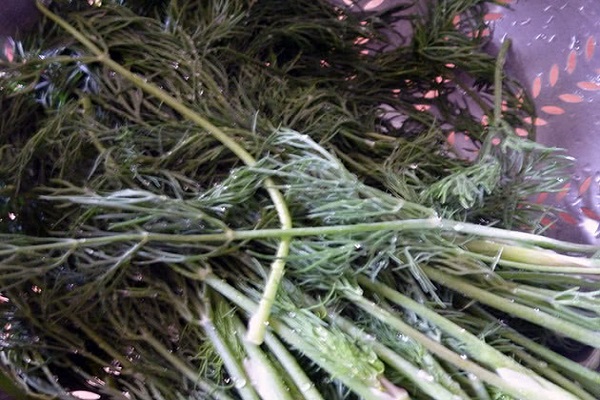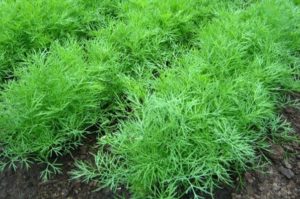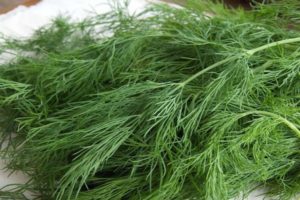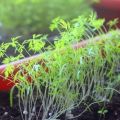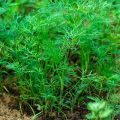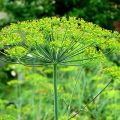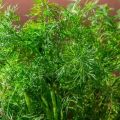How and when to plant dill before winter, so that it is large
Dill is considered one of the most common types of greens due to the possibility of using it in the preparation of various dishes. The plant is prized for its flavor profile and tangible spicy aroma. Experienced gardeners often plant dill before winter in order to get early shoots of greenery and free the beds in early spring for the next planting.
Dill varieties for autumn sowing
When choosing a variety of greens for planting in autumn, it is important to consider several factors. First of all, you need to calculate how long a specific type of dill will emerge. The early varieties ripen 7-10 days earlier than the late ones, but they have less weight and not very dense foliage. Also, early maturing varieties quickly form a stem and are more suitable for germination in film greenhouses. Suitable varieties for autumn sowing include Kibray, Salute and Umbrella.
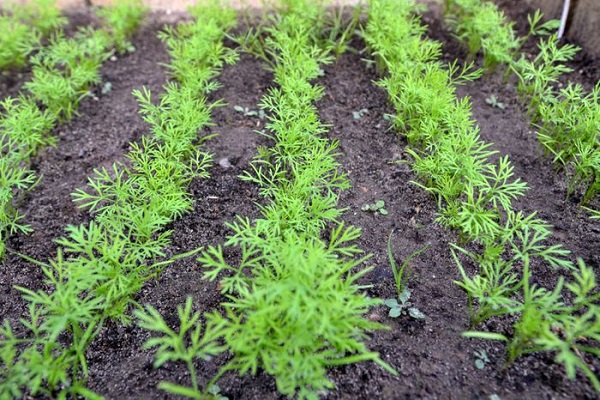
In addition, when planting, you should find out what temperature the variety can withstand in order to avoid the death of the shoots. Bush-type varieties are popular for autumn planting, the seeds of which tolerate frost well and slowly form stems. The optimum temperature for planting all bush varieties is 3-4 degrees.
When is it better to sow dill: in autumn or spring
The required time for sowing greens may vary depending on the region of cultivation, soil condition and atmospheric conditions. Due to the ability of dill to withstand frosts down to -3 degrees, the first seeds can be laid in early spring after the snow has melted. You will get an early harvest in April if the average temperature has exceeded 10 degrees Celsius.
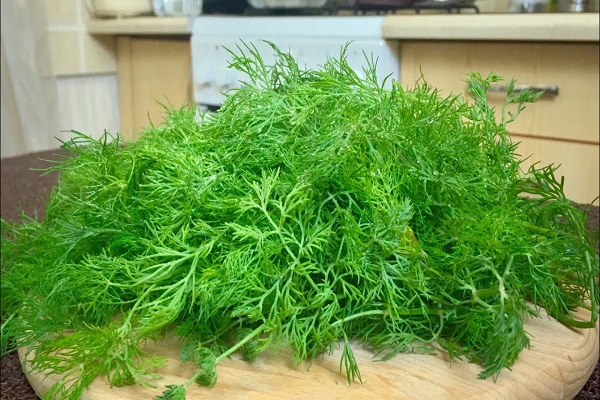
Sowing dill in the fall should, if you wish, get a harvest in early spring. Seeds overwintered in the soil begin to germinate 2 weeks earlier than the spring plantings. When sowing in autumn, there is a risk that late frosts will lead to the freezing of seedlings.
Timing of winter landing
The most common mistake gardeners make when planting greenery in winter is the wrong timing. Due to early planting, seeds germinate quickly, and during the first frost, the shoots die. Sowing is best done in November, when the soil is slightly frozen and the seeds will not swell and grow. A month before planting, compost or humus is introduced into the soil with the addition of potassium-phosphorus fertilizing. Nitrogen fertilizers are not used for sub-winter planting.
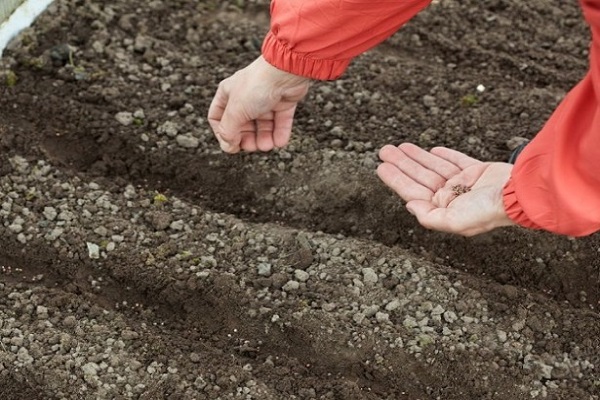
Seed preparation
Before sowing dill, the seed should be prepared. There are several ways to prepare seeds for planting. The simplest of these is to rinse and soak in water for a day to swell. Wood ash or other versatile fertilizer can be added to the water.The temperature of the soaking liquid should be 20-25 degrees.
During the day, the water should be changed 3-4 times to wash out the substance that slows down germination from the seeds.
Another method of preparation involves burying the seeds in moist, unheated soil at a shallow depth 2 weeks before sowing. The seed must be pre-dried and put into a cloth bag. Before sowing, the seeds should be spread out on paper and dried before spilling.

Preparing the beds
Dill needs open and brightly lit areas with fertile, loose soil. In such beds, plants become lush, fragrant and have strong stems. When preparing the beds for planting, you need to dig deep into the ground, crushing all the lumps, and then add organic fertilizing (humus or compost). After fertilizing the soil, the surface of the garden is leveled.
It is better to arrange seed holes in the open field in the direction from north to south so that the rows of the crop are evenly illuminated and heated. The distance between the rows of dill should be about 20 cm for the free formation and development of the root system. Before the onset of the first frost, the soil subsides slightly, and the bed becomes ready for planting.
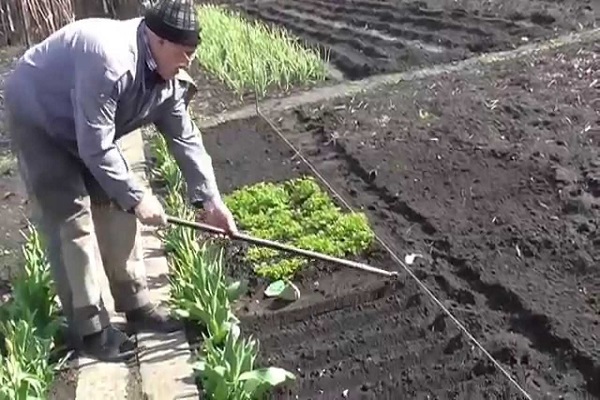
Landing
To plant dill, you need to make grooves on the beds with a depth of no more than 2 cm, sprinkle seed in them and cover with earth. If frost is likely, you can protect the beds with covering material. In the autumn, greens should be planted at a temperature of 3-4 degrees. After planting, mulching is necessary so that in winter a crust does not form on the surface of the soil, which can further create an obstacle to germination.
Watering the seedlings immediately after sowing is not recommended, as dry soil will allow moisture to be retained in the soil.
The area for crops should be well lit and closed from constant wind. It is best to place greens behind vegetables, flowers and other herbs. An important condition for planting dill is the proximity to growth-friendly crops. The plant should not be placed next to cumin and fennel. Suitable precursors are cucumbers, cabbage and similar vegetable crops.
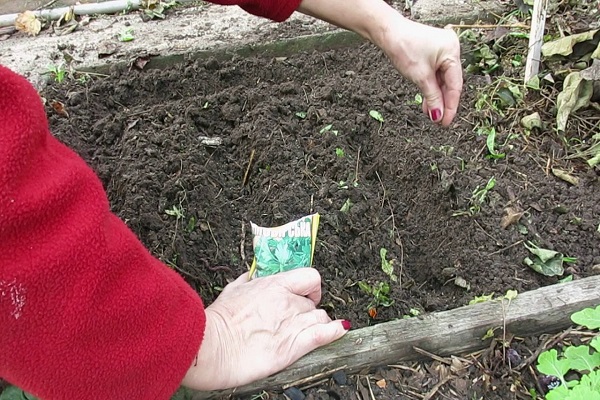
Care
The unpretentiousness of culture allows grow dill subject to the standard list of care rules. To properly grow greens, it is enough to comply with the following requirements:
- Periodically, you need to visually inspect the beds to identify and eliminate weeds.
- Dill needs moderate watering without stagnation of moisture in the soil.
- If the plant is damaged by diseases or pests, the beds should be treated with insecticidal fertilizers and the damaged parts of the greenery should be removed from the beds.
- To protect the autumn planting from frost, you can use a film or other covering material as an additional measure.
- During the growing season, plants are not fertilized or sprayed with anything, since the use of pesticides can significantly reduce the amount of the crop.
- Re-sowing of greenery is allowed every 15-20 days to get the maximum possible yield.
- The soil should be regularly maintained in good condition by performing weeding and loosening.
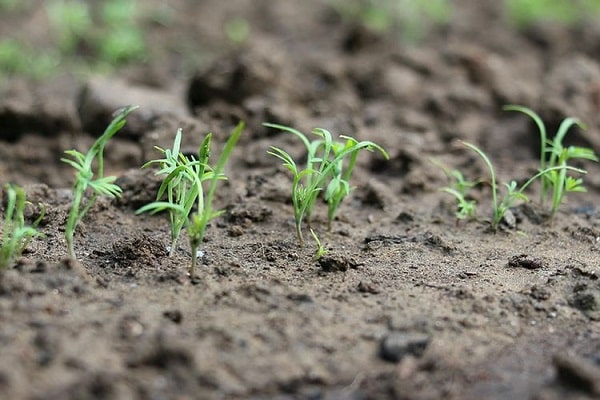
Harvesting
Dill can be cut at a plant height of 15-20 cm, 3 weeks after germination. When growing bush varieties, greens can be cut off many times. When collecting, it is recommended to first treat the plants with water and only then cut them at a level of 2 cm from the ground. At the same time, the roots should remain in the soil and, with further care, form a new crop. To make it large, bush varieties should be grown.
When growing common types of dill, you can pull out the shoots with roots by shaking them off the ground and rinsing them in clean water. Fresh, the plant can be stored for 10 days if left in a cool room or refrigerator. If canning umbrellas are needed, they can be cut off at the beginning of the seed filling period, 2 months after the first shoots appear. When planting a crop in several approaches, it will be possible to collect fresh greens on a constant basis throughout the season.
